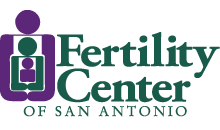MENSTRUAL CYCLE PHASES – SAN ANTONIO, TX

Women should consider tracking their monthly cycle. It’s crucial if you’re trying to become pregnant, and knowing your body and its rhythms can be helpful in diagnosing general health problems. Even though our San Antonio, TX center offers state-of-the-art infertility treatments for men and women experiencing fertility problems, many treatments start with our specialists discussing a patient’s monthly cycle.
Dr. Joseph E. Martin and the team at the Fertility Center of San Antonio would like to go over the different phases of a woman’s cycle below. This should help you understand timeframes, durations, and peak windows of fertility during an average cycle.
The Menstrual Phase
When the menstrual phase occurs: Days 1-5
The initial phase of your cycle is when you get your period. An unfertilized egg causes certain hormone levels in your body to change. This decrease in certain hormones causes the supportive tissue lining the uterus to be shed. If the egg was fertilized, this tissue would have supported the fertilized egg for it to develop and be carried to term.
The menstrual phase can sometimes last for up to a week. During the menstrual phase, women may experience the following symptoms:
- Cramping
- Bloating
- Tender breasts
- Headaches
- Fatigue
- Lower back pain
- Mood swings
- Irritability
The Follicular Phase
When the follicular phase occurs: Days 1-13
The follicular phase happens at the same time as the menstrual phase. Your pituitary gland signals your body to release follicle-stimulating hormone (FSH). FSH helps promote the development of viable follicles in your ovaries. These are not eggs per se, though eggs are contained in the follicles.
When a follicle is mature, additional hormones will be released to form a soft, supportive tissue lining in your uterus. This is the lining that will support a fertilized egg and help with successful pregnancy. The lining will only form once the previous lining has been shed.
The Ovulation Phase
When ovulation occurs: Day 14 (middle of the cycle)
Your estrogen levels will increase during the follicular phase, which will in turn cause the release of luteinizing hormone (LH). LH is the hormone that initiates the process of ovulation. Ovulation means that an egg is released from the ovaries. This mature egg will remain in the fallopian tube waiting to be fertilized.
A mature, released egg will only be viable for around 24 hours. An egg not fertilized within that time will dissolve.
The Luteal Phase
When the luteal phase occurs: Days 15-28
When a mature egg is released, your body will also release a number of hormones, notably estrogen and progesterone. These hormones will maintain the uterine lining in case an egg is fertilized.
If the egg is fertilized, it will attach to the uterine lining and develop into a fetus. Human chorionic gonadotropin (hCG) is released when the egg attaches in order to continue sustaining the uterine lining.
If an egg is not fertilized, then your cycle will begin again.
When in My Cycle Am I Most Fertile?
Women are most fertile during ovulation. This makes sense since a mature egg is waiting to be fertilized. It’s best to time intercourse around three days before ovulation. This will give sperm enough time to reach the egg. Sperm can survive up to five days, so fertility window has some wiggle room, so to speak.
Contact Our Team of Fertility Specialists
To learn more about your many options for addressing infertility and increasing your chances of becoming pregnant, be sure to contact our team of fertility specialists. We at the Fertility Center of San Antonio are here to help. You can each us by phone at (210) 692-0577.










